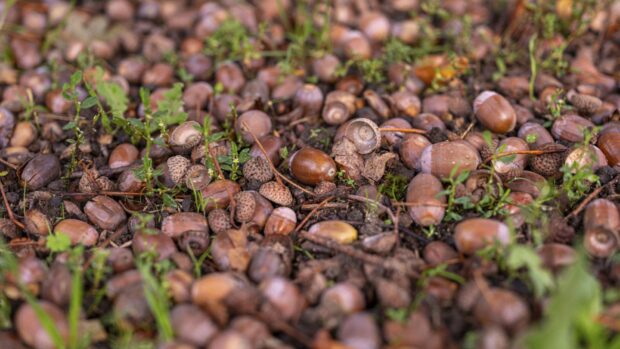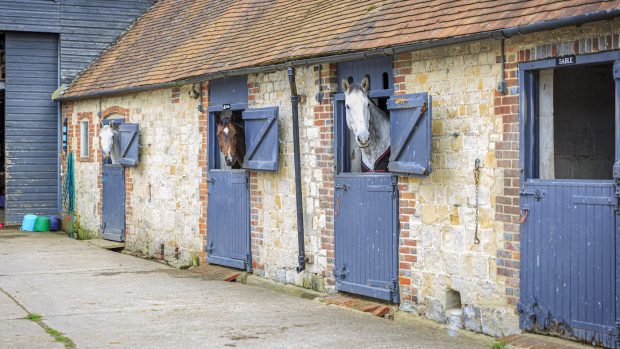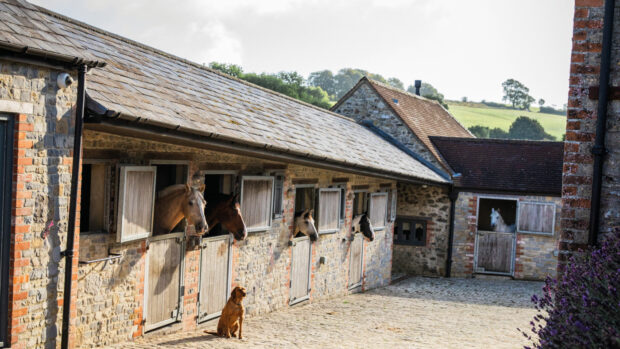Dry conditions can create firm going, which can be challenging for competition horses. Dr Liz Barr offers advice for surviving the season and beyond...
With the weather switching from rain, rain and more rain, to periods of higher temperatures and dry spells in some parts of the UK, riders are wise to keep an eye on the ground they are working their horses on at home, as well as in competitions.
While there is surprisingly limited amounts of evidence-based information regarding the consequences of working horses on hard surfaces, much of what we do know is based on common sense, opinion, anecdotal evidence and personal experience.
On any surface, force is generated between the ground and the foot on impact. On harder ground, more of this force will be dissipated in the lower limb (the structures of the foot and the bones and joints of the pastern and fetlock) and less of the force will be absorbed by the surface.
As the horse’s speed increases, the forces will also increase. Such forces may be considered as concussion. Much of the concussive force generated on hard ground will be absorbed by the structures of the hoof. The elasticity of the hoof wall, collateral cartilages, digital cushion and frog are responsible for absorbing this force and, therefore, foot quality and attention to good farriery are paramount.
Horses with good limb conformation are likely to cope better with hard ground. Any deviation from straight limb conformation will increase the forces on the leg. A horse that has a laterally offset knee (bench knee), for example, will be more at risk of developing a medial splint.
Inflaming the issue
Increased concussion through jumping and working on hard ground will exacerbate underlying issues or subclinical lameness — in much the same way that, as part of a lameness exam or pre-purchase examination, a vet will lunge a horse on a small circle on a hard surface. Whether this form of work will actually cause lameness is more open to debate.
Riders will often find that a horse that has run or jumped on hard ground may be sore and “pottery”, with a loss of action afterwards, and may refer to this as jarring up. While this is not a specific veterinary diagnosis, it is common and most likely results from soreness caused by concussion of joints.
Some increase in soreness after running on hard ground may also occur because horses will typically run faster on firmer ground. Comparatively deeper, softer ground will be more holding and slow the horse up, therefore reducing concussion.
Jarring up will usually resolve after a few days of rest and your vet may prescribe non-steroidal anti-inflammatory treatment, such as bute. If the horse remains lame after this, then the cause of pain may not be so simple and a lameness work up will be needed to identify the source.
The role of increased concussion of the feet due to hard ground in cases of navicular disease is debatable. The aetiology (cause) and risk factors for navicular disease are poorly understood and various theories have been suggested. They are likely to be multifactorial, involving genetics/breeding, conformation and biomechanical factors, but intuitively a horse with subclinical navicular disease will be made worse by working on hard ground such that lameness may become noticeable.
Horses with particularly thin soles may also resent working on hard ground. Many horses that have thin soles or foot pain in general will benefit from application of pads under the shoe and packing with shock-absorbing material, but attention to the type of pad applied and its effect on the quality of the frog is important.
Applying pads for prolonged periods can cause weakening of the frog and digital cushion and/or heel structures. Long term, this will result in a vicious cycle, causing less shock absorbing capacity of the feet and further issues with foot pain. Ideally, pads should be applied only when required and removed as soon as is practical.
While it is common for four- or five-year-old horses to form splints as their workload increases, it is not unexpected to see older horses forming splints that coincide with exercise on hard ground.
Splints in the older horse are treated much the same as in young horses, with rest, cold-hosing, non-steroidal anti-inflammatory drugs and topical anti-inflammatory products. Fracture of the splint as a result of trauma may also be suspected if the splint does not settle and the horse does not come sound in a couple of weeks as expected. X-rays may be required if this is the case.
Ice, ice baby
While most showjumpers now compete almost solely on artificial surfaces, eventers have less control over the ground on which they run, although typically event organisers do whatever they can to produce the best possible going. At the end of the day it is down to riders to decide whether the ground is suitable for their horse or not.
If a decision has been made to run a horse on firmer ground, riding a little slower than normal and avoiding over-studding is recommended. Boots should be removed immediately after competing to reduce unnecessary heating of the tendons and limbs should be iced immediately. The ice is then removed while the legs are cleaned and checked, before the ice is reapplied.
Cold-hosing is also an effective way of cooling legs.
You might also be interested in:

Had enough of annoying flies? We’ve tested some fly sprays to find which really work

How to avoid your horse suffering from sunburn this summer

Subscribe to Horse & Hound magazine today – and enjoy unlimited website access all year round
Horse & Hound magazine, out every Thursday, is packed with all the latest news and reports, as well as interviews, specials, nostalgia, vet and training advice. Subscribe today and enjoy the magazine delivered to your door every week, plus unlimited website access and digital versions of the magazine dating back to September 2012.




